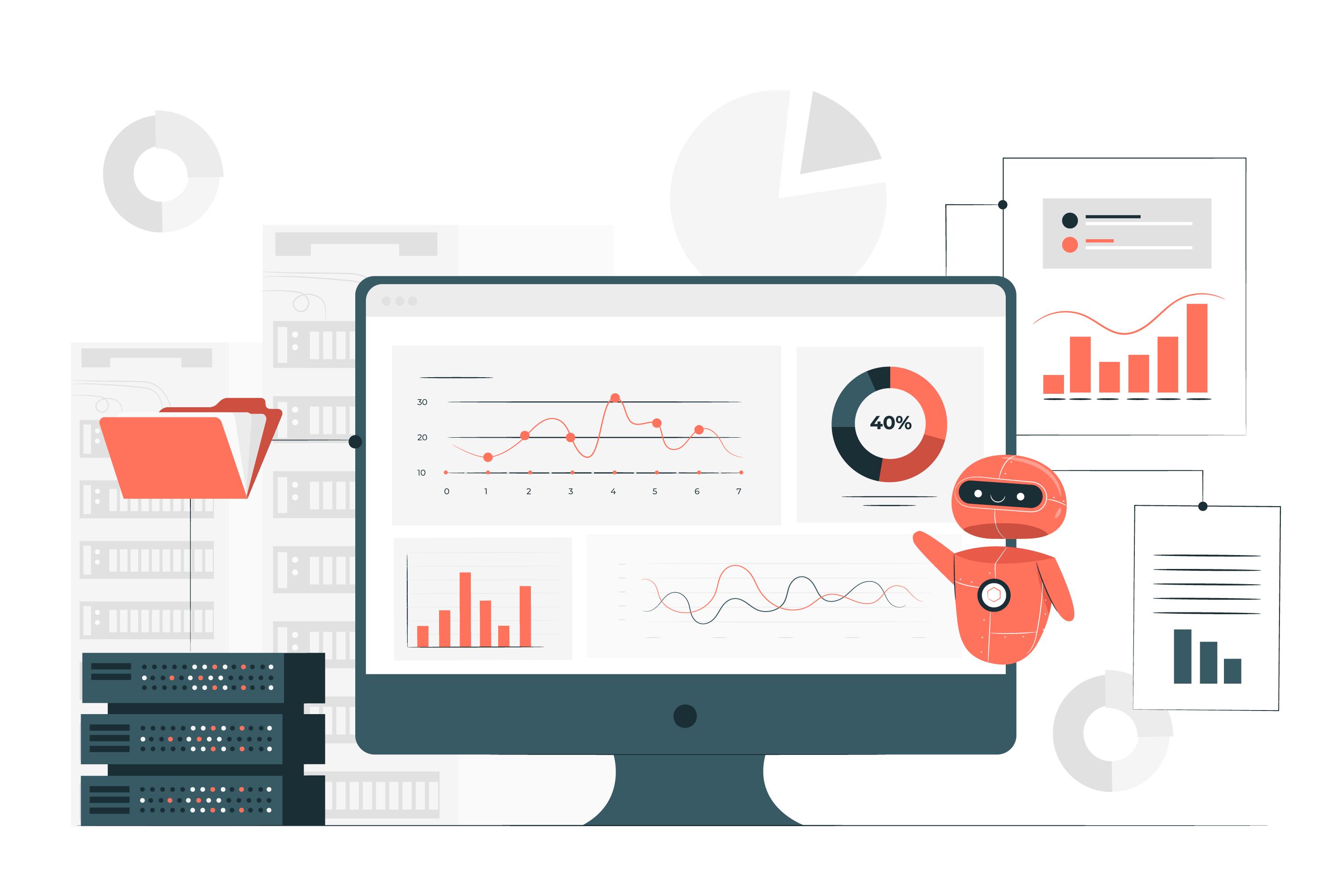Introduction
Welcome to the world of workstations, where the boundaries between the physical and digital realms merge. A workstation is a vital tool in today’s technology-driven society, serving as a central hub for productivity, creativity, and communication. Whether you’re a student, a professional, or an entrepreneur, chances are you rely on a workstation to accomplish your tasks efficiently.
However, workstations are not immune to vulnerabilities. In fact, they are often targeted by malicious actors seeking to exploit weaknesses for their own gain. Understanding the vulnerabilities of a workstation is essential for maintaining a secure and productive work environment.
In this article, we will explore the various types of vulnerabilities that workstations face, ranging from physical to software, network, and human vulnerabilities. By gaining a comprehensive understanding of these vulnerabilities, you can take proactive measures to protect your workstation and safeguard your sensitive information.
Note that a vulnerability refers to any weakness or flaw that could potentially be exploited by an attacker to gain unauthorized access, disrupt operations, or compromise the confidentiality, integrity, or availability of data and systems.
Now, let’s delve into the intricate world of workstation vulnerabilities and discover how to fortify your digital workspace against potential threats.
What is a Workstation?
A workstation is a specialized computer system designed to provide high-performance computing capabilities to individuals or teams working in fields such as design, engineering, architecture, animation, and scientific research. Unlike regular desktops or laptops, workstations are equipped with powerful processors, ample memory, advanced graphics cards, and high-resolution displays to handle resource-intensive tasks efficiently.
Workstations are commonly used by professionals who require robust hardware and software capabilities to perform complex calculations, simulations, rendering, modeling, and analysis. These systems are optimized to handle demanding workloads and run specialized applications with ease.
Workstations often come equipped with specialized peripherals, such as digitizer tablets, graphic tablets, and high-precision input devices, to facilitate the creation and manipulation of digital content. They also provide ample storage space, multiple monitor support, and extensive connectivity options to cater to the diverse needs of professionals in various industries.
While workstations share some similarities with desktop computers, they are purpose-built machines that offer superior performance, reliability, and scalability. Workstations are typically more expensive than regular desktops due to their advanced hardware components and specialized software requirements.
Furthermore, workstations are designed for long hours of uninterrupted usage, incorporating features like enhanced cooling systems to prevent overheating and ergonomic designs to ensure user comfort. These attributes make workstations suitable for professionals who rely on their computing systems to deliver consistent performance under demanding conditions.
In summary, a workstation is a high-performance computer system tailored to meet the specific needs of professionals in fields such as design, engineering, and research. Its advanced hardware, software capabilities, and specialized peripherals make it an essential tool for individuals and teams involved in resource-intensive tasks.
Why are Workstations Vulnerable?
Workstations, despite their powerful hardware and advanced capabilities, are not immune to vulnerabilities. There are several reasons why workstations are particularly vulnerable to cyber threats:
1. High-value targets: Workstations often store and process sensitive and valuable data, making them attractive targets for hackers and cybercriminals. Whether it’s trade secrets, intellectual property, financial information, or personal data, the potential rewards of compromising a workstation are substantial.
2. Complex software: Workstations typically run complex software applications, including CAD (Computer-Aided Design), 3D modeling, data analysis, and simulation software. The intricate codebase of these applications leaves room for vulnerabilities that attackers can exploit. Furthermore, outdated software or unpatched systems increase the risk of exploitation.
3. Increased attack surface: Workstations often have a wide range of connectivity options, including Wi-Fi, Ethernet, USB ports, and Bluetooth. These multiple access points create an expanded attack surface, providing hackers with more opportunities to gain unauthorized access or deliver malicious payloads.
4. Targeted attacks: In industries where workstations are extensively used, such as automotive design, aerospace engineering, or medical research, attackers may specifically target workstations to steal proprietary information or disrupt critical projects. These targeted attacks can be highly sophisticated and difficult to defend against.
5. Human error: Workstation security is not only reliant on technology but also on the actions of the users. Human error, such as clicking on malicious links, opening infected email attachments, or falling victim to social engineering attacks, can easily lead to the compromise of a workstation’s security defenses.
6. Resource-intensive tasks: Workstations are designed to handle intensive computing tasks, which require significant processing power and memory. These resource-intensive tasks often push workstations to their limits, making them more vulnerable to instability, crashes, or software failures.
7. Physical vulnerabilities: While workstations are primarily digital entities, physical vulnerabilities also pose a risk. Stolen or physically compromised workstations can lead to unauthorized access to sensitive data or the installation of backdoors for remote attacks.
Overall, workstations face a unique set of vulnerabilities due to their value, complex software, expanded attack surface, targeted attacks, human error, resource-intensive tasks, and physical vulnerabilities. Recognizing these vulnerabilities is essential to implement effective security measures and safeguard the integrity and confidentiality of workstation data.
Physical Vulnerabilities of a Workstation
When it comes to securing a workstation, it’s important not to overlook the physical vulnerabilities that can compromise its integrity. Here are some of the key physical vulnerabilities that workstations may face:
1. Theft: Workstations are valuable assets, both in terms of their hardware and the data they contain. They are prone to theft, whether it’s due to burglaries, unauthorized access, or insider threats. When a workstation is stolen, not only is the expensive hardware lost, but any sensitive or confidential information stored on it can fall into the wrong hands.
2. Unsecured physical access: Workstations located in public areas, shared workspaces, or open environments are susceptible to unauthorized access. If individuals with malicious intent gain physical access to a workstation, they can easily tamper with the hardware, install keyloggers or other malicious devices, or steal data directly from the system.
3. Environmental hazards: Workstations may be exposed to various environmental hazards, such as power surges, extreme temperatures, humidity, dust, or physical damage from accidents or natural disasters. These hazards can directly impact the hardware components of a workstation, leading to system failures, data loss, or the inability to operate effectively.
4. Insufficient physical security measures: Inadequate physical security measures, such as lack of surveillance cameras, insufficient locks, or the absence of access control systems, make workstations vulnerable to unauthorized access. Without proper security measures in place, it becomes easier for unauthorized individuals to tamper with the workstation or gain access to sensitive information.
5. Lack of proper backup: Physical vulnerabilities also include the risk of data loss due to hardware failures or other unforeseen circumstances. If a workstation lacks regular backups or an effective disaster recovery plan, critical data may be permanently lost, leading to operational disruptions, financial losses, and compromised productivity.
To mitigate these physical vulnerabilities, several measures can be taken:
– Implement robust physical security protocols, including surveillance cameras, access control systems, and secure storage for workstations.
– Educate employees about the importance of workstation security and the risks associated with physical vulnerabilities.
– Implement proper backup and disaster recovery plans to ensure that critical data is protected and can be restored in case of unforeseen events.
– Secure workstations with cable locks or other physical deterrence mechanisms to prevent theft or unauthorized removal.
– Regularly inspect and maintain workstations to identify and address any potential physical vulnerabilities, such as loose cables, damaged components, or environmental risks.
By addressing and mitigating these physical vulnerabilities, organizations can enhance the overall security and reliability of workstations, protecting both the hardware and the valuable data they contain.
Software Vulnerabilities of a Workstation
A workstation’s susceptibility to software vulnerabilities is a major concern when it comes to securing its integrity and protecting sensitive data. Here are some common software vulnerabilities that workstations may face:
1. Outdated software: Running outdated software, including operating systems, applications, and plugins, can leave workstations vulnerable to attacks. Software vendors regularly release updates that address security vulnerabilities. Failing to install these updates promptly increases the risk of exploitation by cybercriminals who actively search for weaknesses in outdated software.
2. Unpatched systems: Neglecting to apply patches and security updates can expose workstations to known vulnerabilities. Cybercriminals often exploit unpatched systems by distributing malware, stealing data, or gaining unauthorized access. Regular patch management is crucial to remediate software vulnerabilities and maintain a secure workstation environment.
3. Malicious software: Workstations may be susceptible to malware attacks, such as viruses, worms, Trojan horses, ransomware, or spyware. These malicious programs target software vulnerabilities to compromise workstations, steal sensitive data, or disrupt operations. Users should exercise caution while downloading files or visiting suspicious websites to reduce the risk of malware infections.
4. Weak or default passwords: Weak or default passwords make workstations more vulnerable to unauthorized access. Attackers can easily crack weak passwords and gain control of the workstation, potentially compromising sensitive data. Users should implement strong, unique passwords and consider using password managers to enhance security.
5. Social engineering: Workstations can be compromised through social engineering techniques that exploit human psychology. Phishing emails, fake software updates, or deceptive websites can trick users into downloading malicious software or revealing sensitive information. Employing security awareness training and teaching users to identify and report suspicious activities can help mitigate the risk of social engineering attacks.
6. Unsafe software practices: Installing software from untrusted sources, pirated software, or unauthorized applications can introduce vulnerabilities into the workstation. Users should adhere to trusted software sources, avoid downloading and installing applications from unfamiliar websites, and only use licensed software to minimize the risk of introducing malicious code.
7. Insufficient user privileges: Granting excessive administrative privileges to users increases the likelihood of accidental or intentional system modifications that can introduce vulnerabilities. Limiting user privileges to necessary functions reduces the impact and potential damage of malicious actions.
In order to mitigate these software vulnerabilities, organizations and individuals must follow best practices:
– Keep all software, including operating systems, applications, and plugins, up to date with the latest security patches and updates.
– Use reliable antivirus and anti-malware software to detect and prevent malicious programs from compromising workstations.
– Employ strong and unique passwords for all accounts and consider implementing multi-factor authentication.
– Implement strict software installation policies and restrict users from installing unauthorized or non-approved applications.
– Regularly educate and train users on cybersecurity best practices, including how to identify and avoid social engineering attacks.
– Use firewalls and other network security measures to safeguard workstations from external threats.
By addressing these software vulnerabilities and adopting proactive security measures, workstations can remain resilient against potential cyber threats and ensure the confidentiality, integrity, and availability of critical data and systems.
Network Vulnerabilities of a Workstation
Workstations are consistently connected to networks, making them susceptible to various network-based vulnerabilities that can compromise their security. Here are some common network vulnerabilities that workstations may face:
1. Unsecured Wi-Fi networks: Connecting workstations to unsecured or public Wi-Fi networks leaves them vulnerable to eavesdropping and unauthorized access. Hackers can intercept network traffic, capture sensitive information, or deploy man-in-the-middle attacks. Always use secure, encrypted Wi-Fi connections and avoid connecting to untrusted networks.
2. Weak network configurations: Insecure network configurations, such as weak passwords, default configurations, or improperly configured firewalls and routers, increase the risk of unauthorized access and data breaches. Network administrators should ensure that proper security measures, such as strong passwords, encryption, and appropriate firewall settings, are in place to protect workstations from network-based attacks.
3. Phishing and social engineering attacks: Network vulnerabilities can also arise from phishing emails, deceptive websites, or social engineering techniques that trick users into revealing sensitive information or clicking on malicious links. Rigorous security awareness training and education on identifying and avoiding such attacks are crucial to minimize the risk of network compromise.
4. Vulnerable network protocols: Outdated or insecure network protocols can be exploited by attackers to gain unauthorized access to workstations. It is vital to use secure protocols like HTTPS for web browsing and SSH for remote connections to protect data transmission from interception and tampering.
5. Remote access vulnerabilities: Remote access tools or services can introduce network vulnerabilities if not properly secured. Weak passwords, outdated remote access software, or unencrypted connections can enable attackers to gain unauthorized control over workstations. Implementing strong authentication measures and encryption protocols for remote access is essential to protect against such vulnerabilities.
6. Insufficient network segmentation: Failing to segment networks can expose workstations to additional risks. If an attacker gains access to one workstation, they can move laterally across the network, potentially compromising the entire infrastructure. Network segmentation can restrict the reach of an attack and minimize potential damage.
7. Unmonitored network traffic: Lack of monitoring and analysis of network traffic can make it difficult to detect malicious activity or identify potential security breaches. Implementing network monitoring tools and intrusion detection systems (IDS) allows for immediate detection and response to any unusual network behavior.
To mitigate network vulnerabilities, organizations should implement the following network security best practices:
– Use strong, unique passwords for network devices and regularly change them.
– Employ encryption technologies, such as VPN, to secure network connections and protect data in transit.
– Employ firewall and network intrusion detection systems to monitor and filter incoming and outgoing network traffic.
– Keep network devices and software up to date with the latest security patches and firmware updates.
– Implement strong access control measures, such as authentication and authorization protocols, to restrict access to network resources.
– Regularly perform network security audits and penetration testing to identify and address vulnerabilities.
By implementing these measures, organizations can fortify their workstations against network-based vulnerabilities and ensure the integrity, confidentiality, and availability of their data and systems.
Human Vulnerabilities of a Workstation
While technological vulnerabilities are often a primary concern, it’s important not to overlook the human element when it comes to workstation security. Human vulnerabilities play a significant role in the overall security of workstations. Here are some common human vulnerabilities that workstations may face:
1. Phishing and social engineering: Humans can easily fall victim to phishing attacks, where cybercriminals send deceptive emails or messages aiming to trick users into revealing sensitive information or downloading malware. According to the 2020 Verizon Data Breach Investigations Report, 22% of data breaches involve phishing attacks. Educating users about phishing techniques and promoting vigilance can help mitigate the risk.
2. Weak password practices: Many individuals still use weak, easy-to-guess passwords or reuse passwords across multiple accounts. This leaves workstations vulnerable to brute-force attacks or credential stuffing. Promoting strong password practices, including using unique and complex passwords, can significantly enhance workstation security.
3. Lack of security awareness: Human vulnerabilities often stem from a lack of awareness about cybersecurity best practices. Users may unknowingly engage in risky behaviors, such as clicking on suspicious links or downloading unverified software, which can introduce malware or compromise workstation security. Regular security awareness training helps educate users and cultivate a security-conscious culture.
4. Insider threats: Insider threats, whether intentional or unintentional, pose a significant risk to workstation security. Employees with access to workstations may intentionally misuse or leak sensitive data, or unknowingly introduce vulnerabilities through their actions. Implementing access controls, monitoring user activities, and enforcing robust security policies help mitigate insider threats.
5. Physical security negligence: Human negligence regarding physical security practices can compromise workstations. Leaving workstations unattended in public spaces, failing to lock screens when away, or sharing login credentials can result in unauthorized access. Encouraging employees to secure workstations when not in use and enforce physical security policies are crucial.
6. Insufficient data backup: Human error, such as accidental file deletion or overwriting, can lead to data loss if sufficient backup measures are not in place. Encouraging regular data backups and implementing automated backup solutions minimize the risk of permanent data loss and aid in recovering from security incidents.
7. Lack of software updates: Neglecting to update software and operating systems creates vulnerabilities that attackers can exploit. Users may delay updates due to inconvenience or lack of awareness about the importance of updates. Emphasizing the significance of updates and implementing update policies ensures workstations remain protected against known vulnerabilities.
Addressing human vulnerabilities requires a multi-faceted approach:
– Conduct regular security awareness training to educate users about common threats, phishing techniques, and safe browsing habits.
– Enforce strong password policies, including the use of complex, unique passwords and multi-factor authentication.
– Implement access controls and user privileges to limit potential damage caused by insider threats.
– Encourage a culture of security consciousness and reporting of suspicious activities or incidents.
– Regularly communicate and reinforce security policies to ensure compliance and understanding.
By addressing human vulnerabilities in conjunction with technological measures, organizations can significantly enhance workstation security and protect against a wide range of threats.
Conclusion
Workstations are essential tools that empower individuals and teams to perform complex tasks, but they are not immune to vulnerabilities. Understanding the various vulnerabilities that workstations face is crucial for maintaining a secure and productive work environment.
In this article, we have explored the physical, software, network, and human vulnerabilities that can compromise the integrity and security of workstations. Physical vulnerabilities, such as theft and unsecured physical access, highlight the importance of implementing proper security measures and surveillance to protect workstations from physical threats.
Software vulnerabilities, including outdated software, unpatched systems, and malicious software, emphasize the need for regular updates and maintenance. Employing strong security practices, such as installing updates promptly, using reliable antivirus software, and practicing safe software practices, can mitigate software-related vulnerabilities.
Network vulnerabilities, such as unsecured Wi-Fi networks and weak network configurations, underscore the importance of securing network connections, implementing proper encryption protocols, and monitoring network traffic to prevent unauthorized access and data breaches.
Lastly, human vulnerabilities, such as falling prey to phishing attacks, weak password practices, and lack of security awareness, highlight the critical role that education and training play in maintaining workstation security. By prioritizing security awareness, promoting good password hygiene, and enforcing security policies, organizations can enhance workstation security and minimize the risk of human-induced vulnerabilities.
In conclusion, securing workstations requires a multi-layered approach that addresses physical, software, network, and human vulnerabilities. By implementing robust security measures, staying vigilant, and fostering a culture of security awareness, organizations and individuals can fortify their workstations, protect sensitive data, and maintain a productive and secure work environment.

























